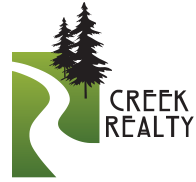Buyers and sellers found 2017 to be an interesting year in Twin Cities Real Estate. During the spring we saw competition on many price points, especially those under $300,000. Buyers encountered multiple offer situations for in nearly all neighborhoods of the Twin Cities. The average sale price for a home has had a steady climb over the past few years of around 5% year over year. This is likely to continue into the coming year.
So what does 2018 look like on the whole? The answer comes down to a few factors, notably:
- Cost of Borrowing
- Inventory
- Buyer Trends
- Location
Lacking a crystal ball, here’s how some of these aspects could play out. for buyers and sellers.
Cost of Borrowing
As of mid-December 2017, Bankrate reports the average 30-year fixed mortgage at a rate of 4.09%. Predictions vary on what increases to expect, but most point to finishing 2018 around 4.5% (Freddie Mac has 4.4% and Zillow reported in a survey that 4.5% was likely).
Using a conventional (20% down) on the average price for a home in the Twin Cities of around $300K, this increase would mean an increase to a homeowner’s monthly payment of $56. Everyone’s situation is different, but that sort of growth is still modest and unlikely to drive buyers out of the market.
Inventory
Over the past few years, inventory has continued to drop in the Twin Cities, creating the biggest effect on competition. Homeowners, lured by low interest rates, have stayed put and refinanced. Often this means improving their current home rather than moving. With applications for refinancing slowing in the latter part of 2017, we may be reaching an end to this period. This will not create an immediate impact on the inventory, but in the coming years, we are likely to see more move-up buyers.
From 2008 to 2011, the average tenure of a homeowner in their current house went from 6 years to 9 years. Since 2014, that number has been hovering right around 9-10 years. A lot of those buyers who bought in 2008 might be at the right time to move up in the next year.
The baby boomer generation is the rock holding firm in single family homes, but the oldest of these homeowners will turn 73 this year and the youngest will be 53. As their needs change, so will the housing landscape. Many communities show strong growth in new construction of senior housing, and anecdotally we’ve talked to a good number of homeowners who are considering such options.
We’ll see what happens soon after the first of the year, but don’t expect major increases in inventory overall.
Buyer Trends
It’s no secret that Millennial buyers are the next big wave, and in general, where they want to be is most often in the metropolitan areas of Minneapolis and Saint Paul. Buyers who can afford it are snatching up any neighborhood around the city lakes, and pricing shows it with sales prices in 2017 being very close to original list. Some neighborhoods are averaging slightly higher than this!
Today’s buyer, especially those buying for the first time value the following:
- Walkability
- More reasonably sized homes
- Amenity rich neighborhoods (shopping, dining, recreation, transportation)
This set of desires favors areas like South Minneapolis, Mac-Groveland in Saint Paul, and even some of the first-ring suburbs such as Richfield among trending areas. When a first time buyer cannot afford the trendiest locations, they will often expand to search these suburbs as well, so competition has been widespread.
There is no indication this will change in the coming year, unless we see the two puzzle pieces of baby boomers and move-up buyers making changes. Both of these are long-term trends and unlikely to make an immediate impact on supply.
Location
As a part of the discussion in buyer trends, some markets are hotter than others. All the evidence points to areas of high demand in the cities of Minneapolis and Saint Paul, but price growth is typically local overall. While Richfield single family homes saw a price increase of 8.5% in 2017, nearby Bloomington only grew by 6.6% (traditional sales of previously owned single family homes) – Some cities, like St. Anthony, saw price growth of 13% on the other side of the coin.
Minneapolis is more desirable than Saint Paul (5.2% and 3.6% sales price increases in 2017, respectively) by the numbers. Will developments like those happening in the West 7th neighborhood of Saint Paul such as the Keg and Case development of the old Schmidt’s Brewery signal greater demand in traditionally overlooked areas? We’ll see in the coming months. Today’s buyer does well to be fluid, and keep an open mind to geographic areas. It can pay to think outside the box in this competitive market.
FINAL THOUGHTS
The saying goes that every home-seller becomes a home-buyer. With our clients, we always make it a point to know how your individual market is doing and meet your goals for selling in 2018 and get the best price, terms and timeline for sellers. As buyer’s agents, we can help our clients be nimble and always working towards the goal of getting the ideal home at the right price. If moving in 2018 is in your plans, call us today to discuss your options.
